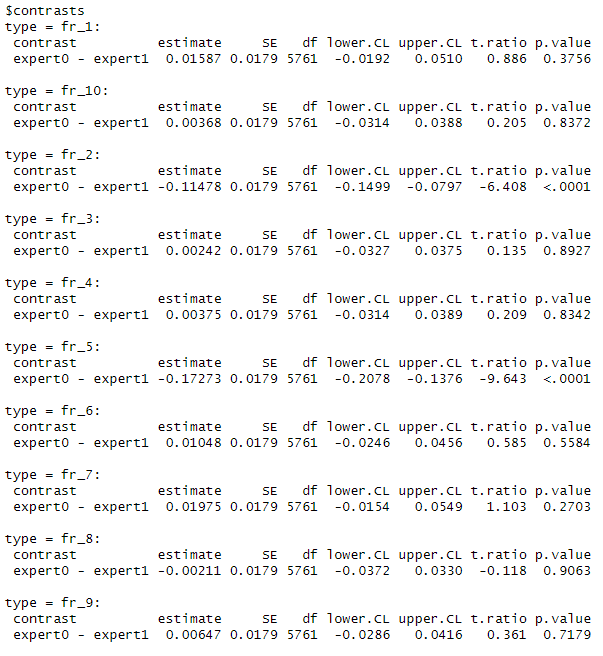I have created a linear mixed model and am using emtrends to determine the impact of a dichotomous variable on the effect of a continuous variable, across levels of a categorical variable. Is it expected for the standard errors (& 95% CIs) to be uniform across the categorical variable? I wish I understood more about the underpinnings of how contrasts work mathematically, and want to make sure I am doing it correctly. I have included the code and output below.
The idea, is to determine if a baker being an expert or not (dichotomous, 1/0) impacts the effect of time (cont) on freshness (cont) of bread, after baked. Also if so, which types of bread (10 level nominal), are affected more than others. The types of breads vary in freshness at time 0 and at follow up, and decrease in freshness at different rates. I would think their standard errors would differ by the magnitude of their freshness, but instead they are all the same. By using contrasts is it normal to have a constant error across the 'by' group levels?
Thanks for your help!


